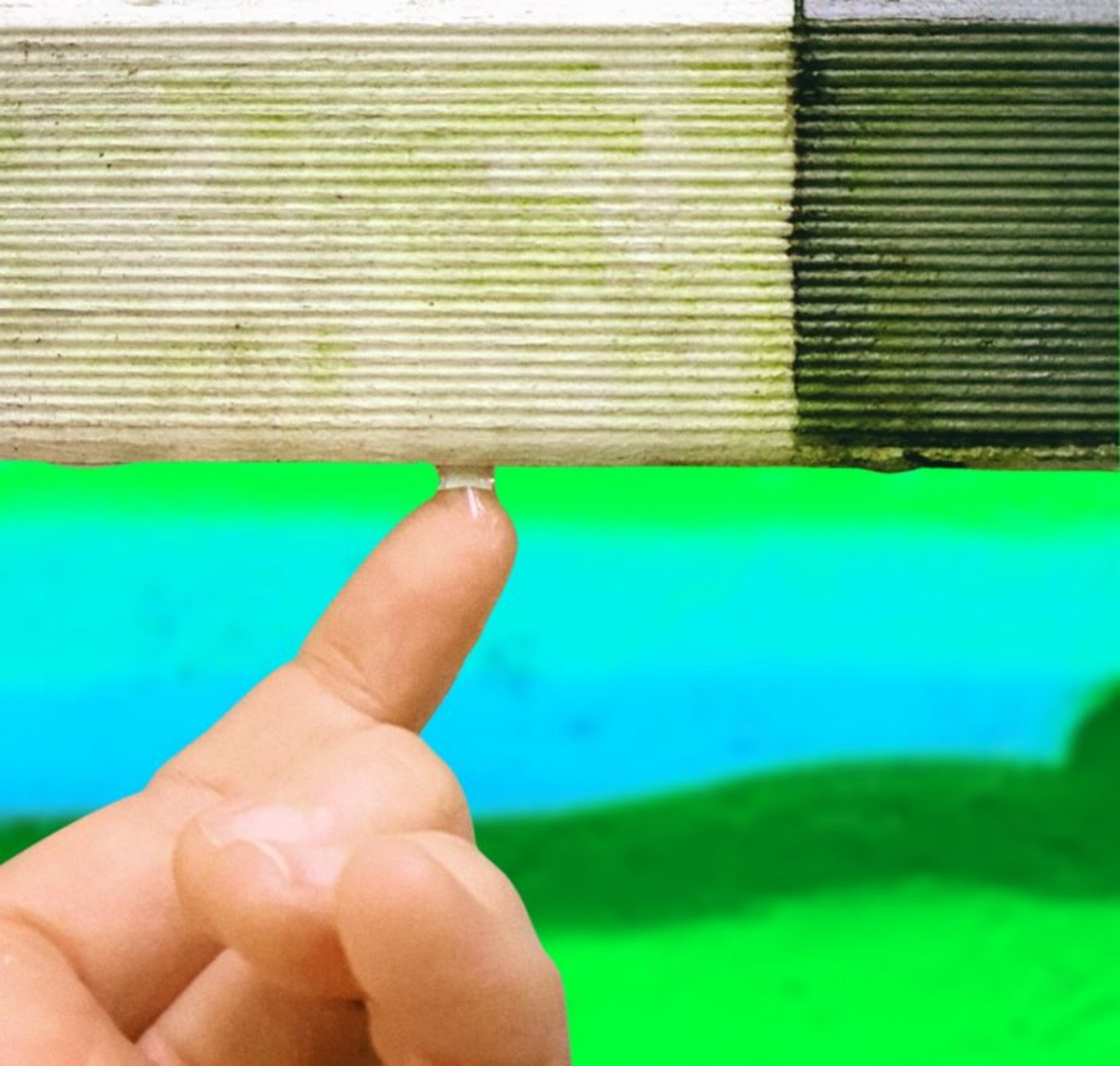Eco Ways & DIY Recipes to Remove Mould & Moisture
How to prevent mould by absorbing moisture and dehumidifying your home naturally and sustainably, 10 ways to reuse desiccant packs, and eco-friendly methods you can use to get rid of mould.
The best way to prevent mould and to ensure it doesn’t come back after all your hard work getting rid of it is to stop the source of the moisture from making your home damp. Find out where this moisture is coming from and why your home is damp. It could be due to poor ventilation, bad drainage, leaks from plumbing or the roof, or lots of condensation. Fixing this problem should fix your mould problem!
You can use natural moisture absorbers or reuse desiccant packs to remove moisture in your home and dehumidifiers to dry out your indoor air when the humidity is high.
If the mould has set in, and you need an eco-friendly way to remove it, you can use one of our natural mould removal recipes.
Eco-Friendly Mould Prevention
Regular Cleaning & Sun Drying to Prevent Mould
To prevent mould, make sure you’re vacuuming and cleaning regularly – mould flourishes when there’s lots of organic matter like dead skin cells around!
Also, make sure you’re drying out your natural scrubbers, dish brushes, sponges, loofahs, and cloths, so that they’re not continuously damp. And dry bamboo and wooden items like reusable bamboo straws and utensils properly after washing. Hang them outside in the sun or put them on a sunny windowsill to completely dry out occasionally.
You can also use a bathroom spray that has clove oil in it like Euclove’s cleaning bathroom spray (AU) as clove oil kills mould spores, or a shower cleaner that provides protection against mould regrowth like Ecozone Ultra Shower Cleaner (UK), which can be bought in a large refill size, as a preventative method for keeping mould at bay.
Tea tree oil can also kill mould due to its anti-fungal and antibacterial properties, but it is ineffective against certain species of mould, so a refillable bathroom spray (US) with tea tree oil in it could help prevent mould in your bathroom, but it would depend on the type of mould growing in your home.
Reusing Desiccant Packs
Keep and reuse desiccant packs, those little moister absorbers packets found in some food packaging and bottles of medicines and probiotics, and other places. They can be repurposed in many places needing to be dehumidified. 10 ways you can reuse desiccant packs are:
Anywhere you don’t want things to rust, like a toolbox
In jars of dishwasher and laundry powder to absorb any moisture
To keep biscuits, bread, dog treats, and other foods fresher for longer
Together with saved seeds from the garden to protect them from mould or damp
In underwear and socks drawers to keep them free of moistness
Together with a camera and other photographic equipment to keep dampness out
Tape them up in cupboards needing drying out
On windowsills to help stop condensation during winter
Behind books on a bookcase to protect them from moisture
To help dry out a phone or device dropped in water
When they are oversaturated and no longer working you can return them to working order by drying them out in the sun or in an oven, so they can be reused over and over again!
Plastic-Free Moisture Absorbers
Moisture is naturally absorbed by Huon Pine, which also releases the moisture once the air has dried out! So, when it is wet and humid, it will absorb moisture, but when it is no longer humid, it discharges the moisture it has absorbed, which can be up to one-third of its weight, and dries out.
Remove moisture from dank spaces by placing small hessian or cotton bags filled with finely milled Huon Pine in them. These bags of Huon Pine (AU) will also absorb odours, and it can be used as a mothball replacement as well, as it also deters silverfish, moths, and fleas.
It’s more of an air freshener than a moisture absorber, but Clothes Doctor’s natural fragrance bag (UK) also uses natural ingredients to keep moths away and clothing fresh.
Sustainable Dehumidifiers
Dehumidifiers trap moisture and dry out indoor air. Charcoal is a natural dehumidifier. After a few months, it needs to be replaced though. Luckily, you can compost the old used charcoal.
You can simply hang a stick of charcoal in corners or cupboards that need drying out, buy bamboo charcoal air purifying bags (worldwide), or make this DIY charcoal dehumidifier:
DIY Charcoal Dehumidifier
You’ll need:
Punch holes in the lid of a clean can using a screwdriver. Fill the can with activated charcoal and place it where you want to draw in moisture, for example a wardrobe, pantry, and other cupboards, under the sink, and in small spaces.
You can also buy dehumidifiers like Ecozone’s Room Dehumidifier (UK) that protect homes from mildew, mould and musty smells by absorbing unwanted moisture and dampness. The one from Ecozone is unfortunately made from plastic, but it is refillable and reusable.
Killing Mould in Natural Non-Toxic Ways
Persistent dampness results in mould. Fortunately, mould can be tackled without having to use harsh chemicals. In fact, did you know that bleach does not kill mould but only bleaches it white so you can’t see it! This means all the health risks from mould will still be present.
Instead, you can use:
clove oil: clove oil kills mould spores. Clove bud oil is stronger than clove leaf oil as it has much higher levels of eugenol, which cause it to have a more powerful aroma and to have more potent beneficial properties. And this is why clove bud essential oil must be diluted before use. (AU / worldwide)
CLOVE OIL SAFETY:
- always follow the safety instructions when using essential oils
- always dilute to concentrations less than 1% prior to use to avoid skin irritation
- clove oil residue can irritate sensitive skin
- don’t use it if you’re on blood thinning medication
- keep away from children
How to remove mould using clove oil
Cleaning mould from hard surfaces
You’ll need:
1 L water
4:1 mixture vinegar to water
glove (compostable gloves available here AU,
or reusable rubber gloves available here AU / UK / US)mask
Combine 1L of water with a 1/4 tsp clove oil in a spray bottle, screw on the lid and shake to combine (note: don't make it any stronger than that as it won't work better and may damage surfaces)
Spray lightly over the affected area and leave for 24 hours
After 24 hours, wearing a mask and gloves, wipe the area using a cloth dipped into 4:1 mix of vinegar and water to remove dead spores and kill any that are remaining
Remove any remaining discolouration on surfaces with oxygen bleach
Grout mould removal paste recipe
Make a paste out of the bicarb and vinegar, and then add a few drops of clove oil to this paste. Using this mixture and an old toothbrush and wearing a mask and gloves, scrub the grout every few months.
If the mould’s roots are too embedded in the tile grout or silicone, it will persist and may be impossible to remove. Sometimes you will have to re-silicone or re-grout, unfortunately.
How to remove mould using vinegar
Cleaning mould from hard surfaces
You’ll need:
white vinegar
water
microfibre cloth
Create a mixture of 80% white vinegar to 20% water (4 parts vinegar to 1 part water) and use it to wipe down the hard surface with a microfibre cloth.
Clean the microfibre cloth thoroughly after use to prevent re-contamination. Rinse it in a bucket filled with half vinegar and half water, and then rinse it again in another bucket with water only.
Removing mould from fabric and clothing
Reuse an old toothbrush to gently scrape off the excess mould
Soak in a mixture that will remove mould for 45 minutes, such as white vinegar diluted with water and household soap or a mould stain remover (UK)
Wash in your washing machine on the hottest cycle possible that won’t ruin the clothing (will depend on the fabric)
Dry in the sun
No.10 from Clothes Doctor (UK) removes all sorts of fabric stains including mould and mildew. The UK-made plastic-free product uses oxygen-based not chlorine-based bleaching agents to get stains out and can be used on most fabrics, excluding leather, suede, silk, and wool.
Removing mould spores from indoor air
While dealing with your mould issue you’ll want to remove mould particles for your indoor air. These spores can cause allergic reactions and asthma attacks in some people when inhaled.
Mould spores in the air in damp houses can be removed using clove oil and a jumbo stick of chalk! You can hang chalk that has had a few drops of pure clove oil placed on it around the house where needed and mould spores in the air will be eliminated by the clove oil in the air. Reinvigorate the chalk pieces by adding a few more drops of clove oil monthly.
Activated charcoal can also be used to purify air. Products such as ATTITUDE’s Nature + TechnologyTM Natural Air Purifier (UK) use activated carbon to absorb pollutants and deodorise in homes. You can also buy handmade air purifying bamboo charcoal bags (AU) (US here) or hanging linen charcoal dehumidifiers packs (AU).
For large mould infestations, an air purifier designed specifically for mould is recommended for removing spores from indoor air. For example, these InovaAir AirClean models: E8, which covers a 20 m2 area, and E20 Plus and DE20 Plus, which cover a 100 m2 area. They feature medical-grade H13 HEPA filters and high-capacity carbon filters with kilograms of activated carbon.
InovaAir is Australian-made and commercial-grade filters and materials that are safe for the environment and people’s health are used rather than the plastic, cardboard, or polystyrene foam commonly used in these filters. They are long lasting and filter replacement parts are available.
*some of our posts contains affiliate links. If you buy something using one of these links we may earn a small amount. To learn more, see our disclosure policy. We maintain this site in our free time and support in any way, shape or form means a lot and helps us keep it running, whether it is using an affiliate link when investing in something, sharing our content, or buying us a coffee on Ko-fi.



